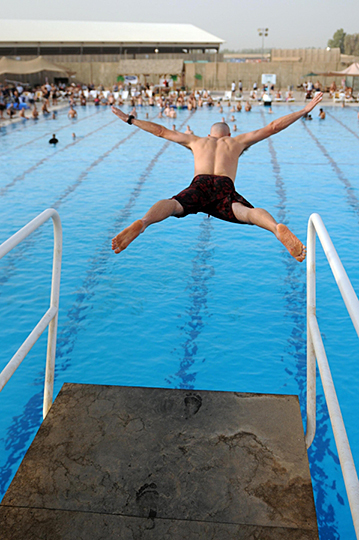Important Diving Tips for Beginners
Posted by Alan on 6th Jun 2014
Shop Prescription Swim Goggles

Diving adds an exhilarating new element to the sport of swimming. By jumping and maneuvering yourself through the air, you can gracefully pierce the water's surface by maintaining full control of your body.
If you've watched any of the Olympic diving competitions, you may assume this is an easy activity to learn. However, diving is anything but easy. It takes practice, patience, dedication and more practice. Whether you're looking to dive as a side hobby or competitively, we have some tips to set you on the right track.
Practice Falling
You can't expect to automatically learn to dive without falling first. Wait until there are no other swimmers around the diving board and practice falling forward. It may sound silly, but falling will teach you how to control your body.
After performing a couple of “dead weight” falls, tilt your body forward and form a pointed triangle with your hands. The body's natural reaction is to stay upright, so you must fight this urge by focusing your head towards the bottom of the pool. When you fall, keep your body straight so your hands pierce the water and your head follows. Congratulations, you've just performed your very first dive!
Practice Jump Diving
By jumping off the diving platform, you'll have more hang time in the air. Go back to the diving platform and position your feet about shoulder-width apart at the edge of the platform. Some divers grip the platform with their feet for added security. Next, bend your knees just slightly and extend your hands once again to form a triangle. Now push down on the board while extending your legs so your body thrusts forward and into the air. You want to bend your core so your arms and face aim towards the pool, and hopefully you'll pierce through the water like before.
Granted, jump diving isn't a beginner-friendly activity but you'll eventually get the hang of it after a couple of tries. The key thing to remember is that you want to constrict your core muscles so your body turns upside down.
Watch and Observe
If you're still struggling to learn how to dive, go to your local public pool or a competition swim meet to see other divers in action. Sometimes all it takes is seeing another perform dive to make the process “click” in your head. Of course, you can also spend some time watching the thousands of diving videos published on YouTube.
Once you've learned the basics of diving, you can then work on your form and technique. Twisting is just one of the many techniques that professional divers use to create a more visually appealing dive so try to include this in your dive. You can also work to improve your form and entry into the water.




